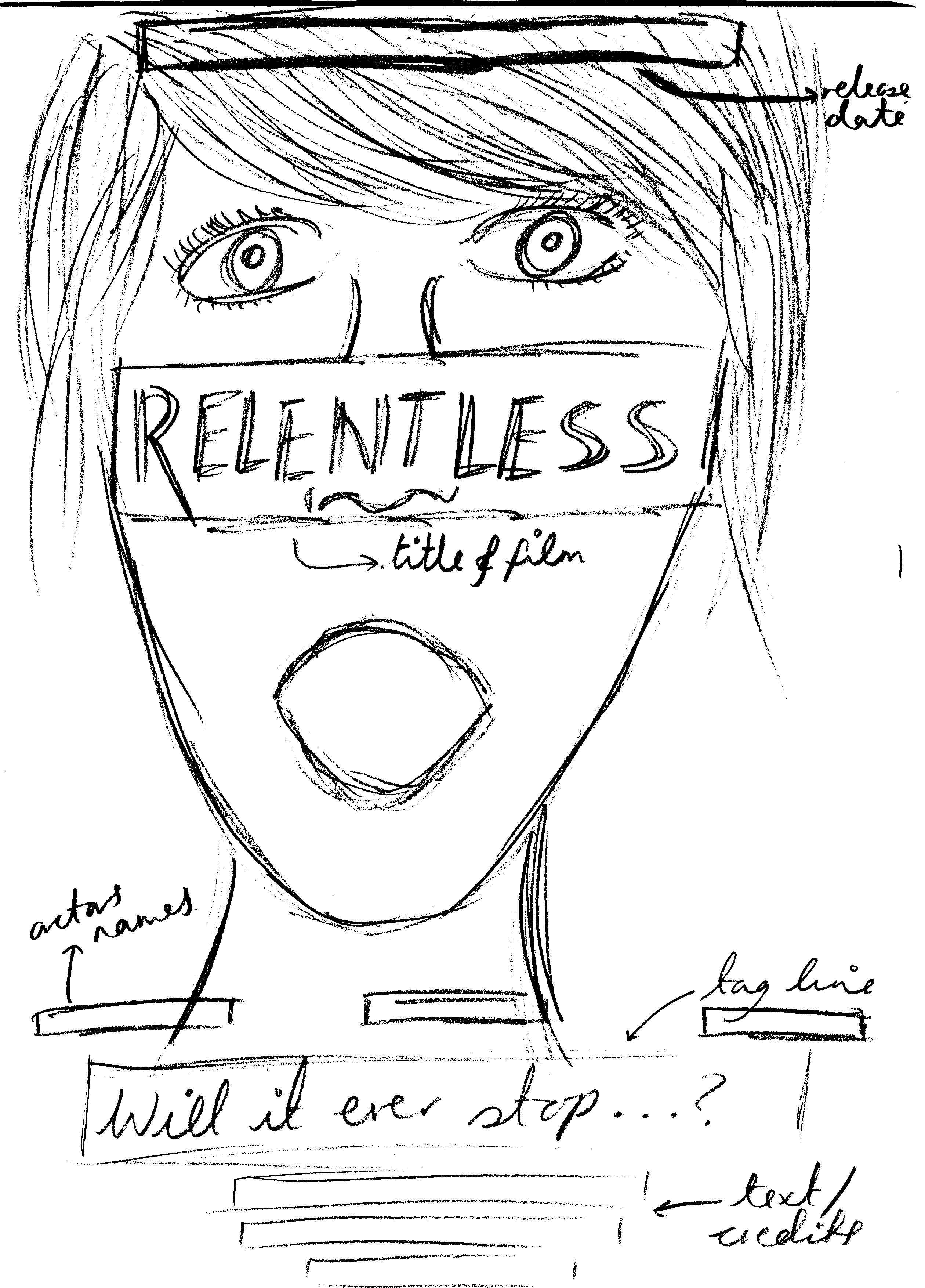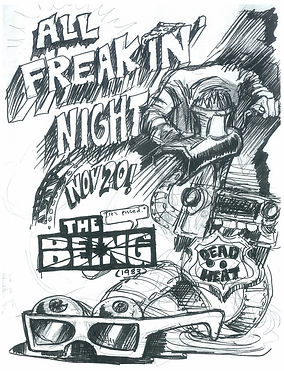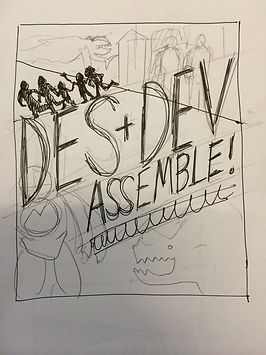Mr. Johnson


“Where the classroom meets the real world”
WELCOME TO MY CLASS!
Graphic Design & Commercial Art
Commercial Art
Lesson 12 - InDesign: Movie Poster Mania
Using Paper, Photoshop, & InDesign!
Step #1
Here is your mission: Create an original Movie Poster starring YOU! There are 3 things you must have in it - A Title, A Tagline (a short saying about the movie), and a picture of you (in some way) in at least HALF of the poster!
IMPORTANT: YOU MUST SAVE BOTH YOUR PHOTOSHOP FILE AND YOUR INDESIGN FILE IN ORDER TO PRINT YOUR POSTERS!
MAKE SURE YOU KEEP BOTH FILES IN MOODLE.
There are 3 parts to this project:
Part 1: Sketch out your poster with paper and pencil on an 11x17 piece of regular paper (yes, you need to turn it in.)
Part 2: Design your background graphic using the tools you know in Photoshop. If you need to do something or an effect you don't know how to do, look for a tutorial on the Internet to help you.
Part 3: Place your Photoshop graphic into InDesign and design the Text on a NEW LAYER on top of the graphic.
How to do these steps is listed below.
There are a bunch of different styles or genres of movie poster to think about. Here is a list of some different kinds. Don't just use the first thing to pop into your head!
Movie Poster Genres:
50s Sci Fi
Action
Animation
Comedy
Horror
Musicals
Romance
Detective
Mystery
Sports
Western
Fantasy
Google some of the poster styles before coming up with an idea for your poster. Pay attention to the lettering style, pictures, and taglines of the films.
Step #2
Research your poster with Google and Draw out a rough sketch.
Once I approve that your poster is school appropriate and have suggested some changes or ideas, move on to step 3!
Find and Save your graphics!
Step #3 - Working in Photoshop
Once you have figured out what you are going to be doing in your poster (remember, you can be GIANT against something small or vice versa) you will need to find the images you will use.
Make sure they are at least 2000 pixels wide so they will not be too small.
Save them to MOODLE.
Take a look at the different genres of posters from the list above. When you find something that you think might be interesting for you, it's time to sketch some ideas!
Ask me for a regular size 11 x 17 piece of paper. With a pencil, begin your sketch.
Here are some examples of some sketches others have done in the past.
PLEASE DON"T COPY ANY OF THEM! Be Original.
There are so many ideas out there!










Next, figure out how you will be put in the picture.
If you are in an action pose and part of another graphic, you will need to borrow my camera and have someone take a picture of you posed that way so you can cut yourself out in Photoshop and put yourself in the picture later!
When you have the graphics you need,
it's time to make your canvas in Photoshop!
Open Photoshop and make a new canvas.
Make the canvas 10 inches wide by 16 inches high at 150 resolution.
If you can't remember how to do this, or haven't done it before,
ask someone nearby or ask me to help.
THIS NEXT PART IS IMPORTANT!
Download all your graphics to the desktop.
DO NOT DRAG THEM INTO PHOTOSHOP!
Use the CONTROL BUTTON and click on the graphic.
Choose OPEN WITH PHOTOSHOP.
When all your graphics are open, SELECT>ALL on one of them
(probably the background image first).
Copy the Image (Command + C).
Go to your canvas and EDIT>PASTE onto your canvas.
Do this for each graphic and you will have a new layer for each one in Photoshop.
Don't forget to add the photo of you that you will be putting in later.
Remember, we can adjust the size of the graphics
when we need to as we use them.
USING PHOTOSHOP
Some TOOLS that will be useful in putting together your graphics are:
The Poloygonal Lasso Tool
Use this to CLICK and Drag, Click and Drag around your image
to copy it and paste it into another graphic.
The Eraser Tool
Use this to ERASE stuff you don't want! Remember, you can RESIZE the ERASER by using the bracket keys!
DON'T FORGET:
Use the MOVE TOOL to move graphics.
COMMAND + T will allow you to resize and rotate graphics.
Always hold the SHIFT KEY and PULL FROM THE CORNER
to keep perspective.
If you want a background color, use the PAINT BUCKET or GRADIENT TOOL and put color in the background. You can get a color from a graphic
by holding the OPTION KEY and Using the Eyedropper.
IF YOU NEED HELP
I am here to help you. BUT, I would like you to try putting some things together on your own. Remember, you will have the original graphics still in Moodle
in case something goes wrong (which it never does, of course!)
If something weird or bad happens, STOP right away and call me.
Have me come over and check your graphic before you are "DONE". I might have some suggestions, like using the FEATHERING TOOL to blend some graphics...
When I have decided you are done, then on to....
Remember, when you save Photoshop files, you must have the .PSD at the end of the file names or you won't be able to open them the next day!
So, your graphic is done and your are ready
to PLACE it into InDesign to add your text. Here's how to do it...
Open InDesign!
Create a NEW DOCUMENT!
Instead of LETTER, Choose TABLOID.
Make sure your Photoshop Graphic is saved to your Desktop.
Select FILE>PLACE and choose your Photoshop file from the Desktop.
Click in the upper left corner of your InDesign file, where the two pink lines meet.
Look for the LAYERS palette on the right side of the screen.
Click on it, and add a NEW LAYER by clicking the icon next to the Trash Can.
Lock the layer with your Photoshop file on it (the BLUE layer).
Click on the RED layer and add your text.
Try the OBJECT>EFFECTS menu and look at Drop Shadow, Bevel and Emboss, and some of the other choices for your text. Also, look for the STROKE Palette and add an OUTLINE to your text if you want!
Save your Photoshop and InDesign files to Moodle!
You will need both of those to print your poster!
Step #4 - Working in InDesign